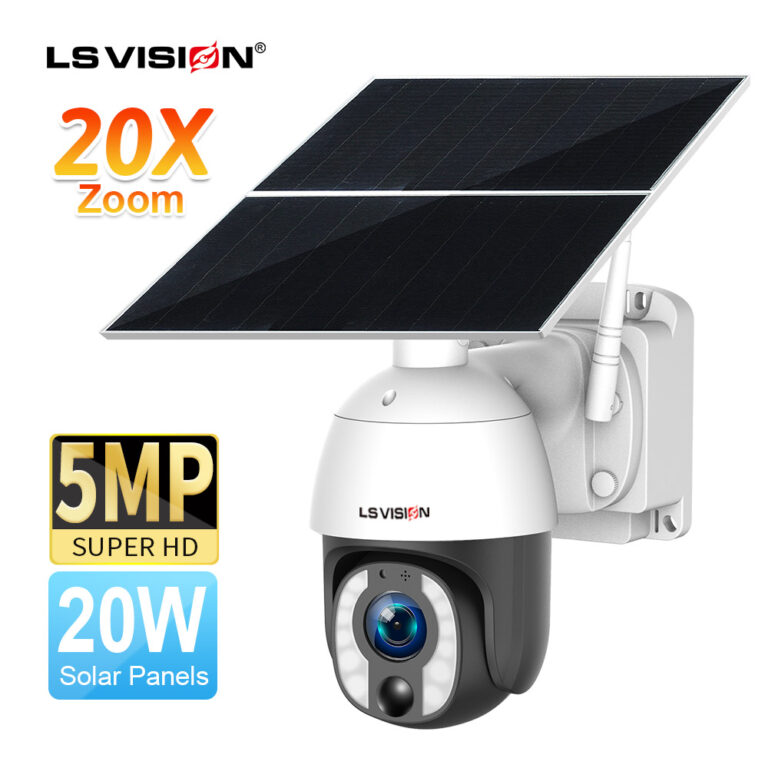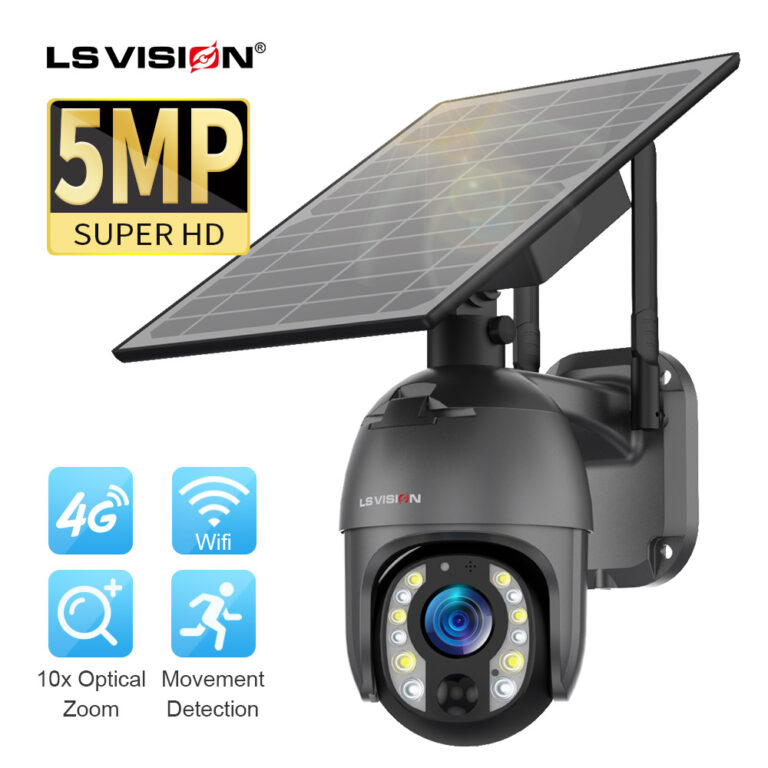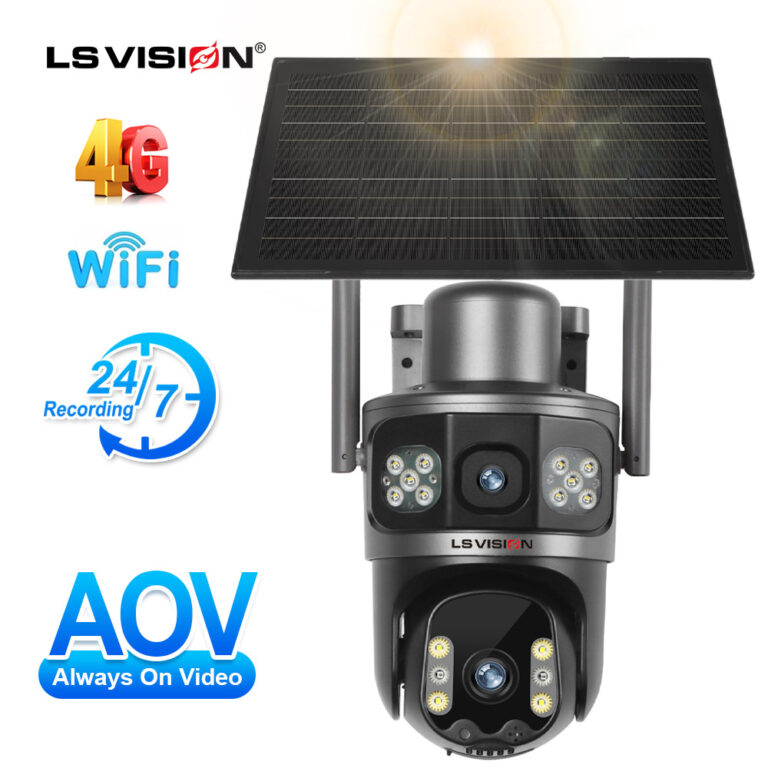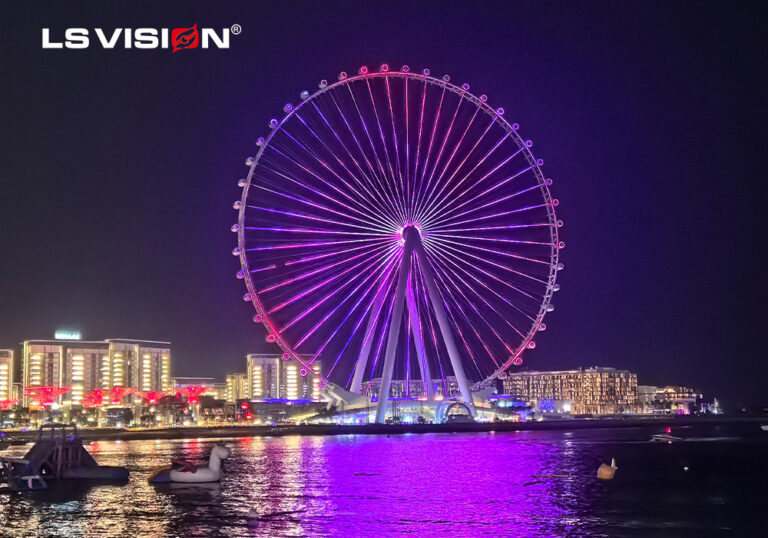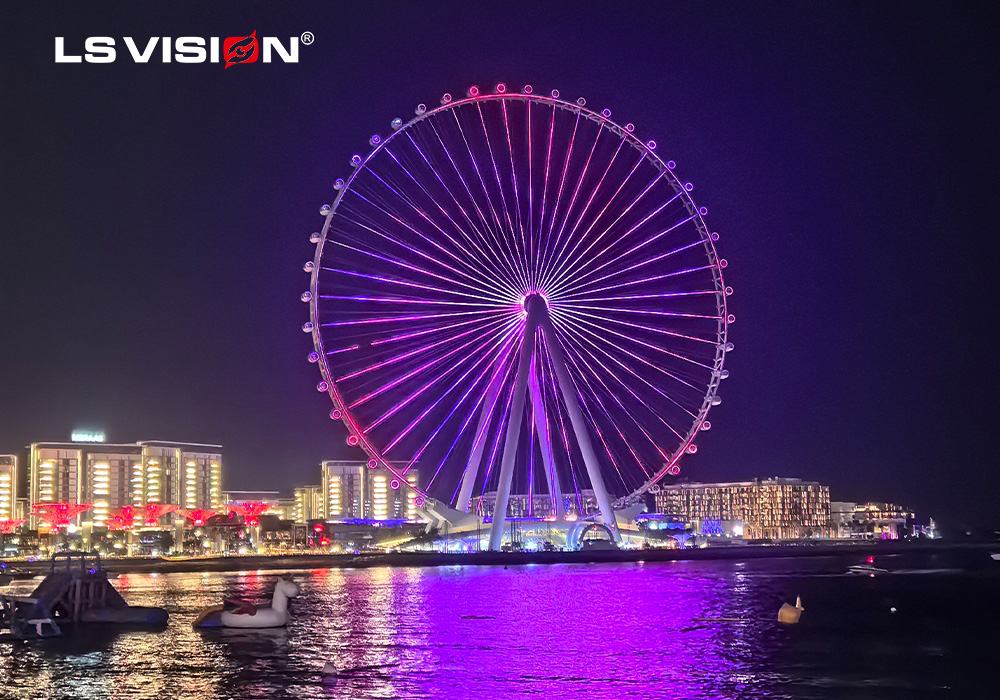The global video surveillance system market is estimated to reach USD 81.68 billion in 2024 and is expected to grow to USD 145.38 billion by 2029, with a compound annual growth rate (CAGR) of 12.22% during the forecast period (2024–2029).
Cameras used in video surveillance transmit signals to specific locations for display on a limited number of monitors. Video surveillance is widely adopted across industries such as manufacturing, banking, financial services, transportation, and retail. The introduction of new IP-based digital technologies for detecting and preventing theft, vandalism, and terrorism is anticipated to drive market growth. This approach has been adopted in countries like the United States, the United Kingdom, India, China, and Brazil, primarily due to the larger scale of industries and greater consumer awareness in these regions.
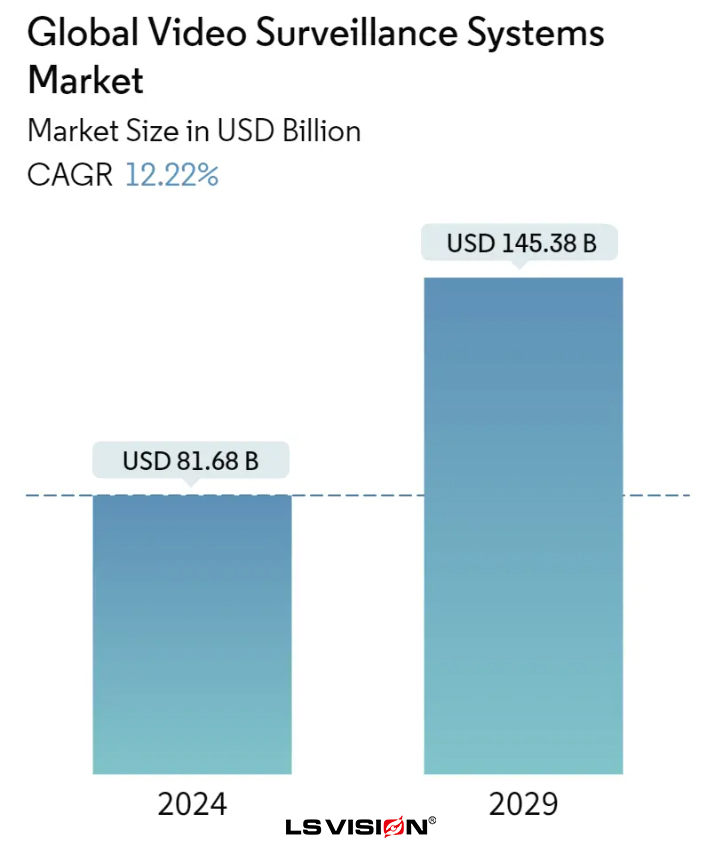

Drivers of Market Growth
Rising Demand for Public Safety Driving Market Expansion
Public safety has become a critical function of governments worldwide. As urbanization progresses, video surveillance is increasingly vital for monitoring population movements and combating crime. Video analytics and surveillance cameras help identify potential offenders, contributing to lower crime rates and increasing the demand for integrated surveillance systems.
Low Investment Costs and High Returns Fuel Growth
By storing video data in the cloud, Video Surveillance as a Service (VSaaS) allows providers to manage video data at significantly reduced costs. Without the need for physical storage devices and onsite staff, IT costs—comprising wages, benefits, and other expenses—are markedly reduced. Service providers handle all monitoring, recording, and maintenance tasks, making this solution cost-effective and enhancing return on investment (ROI). Businesses save on upfront equipment costs like servers, hard drives, or camera licenses, which can then be allocated to purchasing additional cameras or business expansion. Additionally, the increasing adoption of wireless security cameras for quick setups further reduces initial capital expenditure. Competitors offering camera and cloud monitoring as bundled services with flexible subscription options are meeting the diverse needs of businesses.
Expanded Applications Across Various Sectors
Countries like the United States, India, Russia, Israel, China, Singapore, and South Korea have increased budgets for advanced video surveillance systems to monitor quarantine activities, significantly boosting market growth. Globally, smart city initiatives and large-scale projects, particularly in the United States, China, Brazil, India, the Middle East, and other emerging markets, are creating opportunities for the video surveillance market. The development of video analytics technologies such as facial recognition, criminal monitoring, and object detection has led governments to actively deploy video surveillance systems. Law enforcement agencies are increasingly using these systems to ensure public safety. Strict regulations require educational institutions to install video surveillance systems, which is expected to drive market growth. For example, higher education institutions in the United States are recommending body-alert cameras and other surveillance equipment due to the rise in campus shootings.
Constraints
Concerns Over Video Data Security and Privacy
Video surveillance systems have been criticized for privacy invasions by civil liberty groups and activists. Growing concerns about who can access this footage and potential misuse have heightened demands for ensuring personal information is used solely for legitimate and specific purposes.
Emerging Trends
- Growing Demand for Solar-Powered Wireless Cameras
The demand for solar-powered wireless cameras is rapidly increasing, driven by global support for renewable energy, heightened security needs, and technological advancements. Their ease of installation, energy efficiency, and environmental benefits make them a popular choice. With enhancements such as HD video, night vision, and remote monitoring, these cameras are becoming increasingly competitive. The future of solar-powered wireless cameras lies in their integration with IoT and AI technologies, enabling smarter connectivity and wider market prospects.
Market Segmentation of Security and Surveillance

By Type
The market is segmented into security cameras, DVRs, and NVRs, with the security camera segment leading the video surveillance market.
By Application
Applications include residential use, commercial use, and public/government infrastructure, with residential use dominating the market.
Regional Insights
China Expected to Dominate the Asia-Pacific Market
Smart city initiatives are driving the development of China’s video surveillance market, integrating advanced systems with city management to enhance efficiency. For example, the Yinchuan smart city project and Hangzhou’s City Brain project use video surveillance and sensors to collect real-time traffic data for decision-making. With widespread camera adoption in public spaces supported by government funding, China leads the Asia-Pacific market. The country is also advancing AI-based surveillance technologies, with numerous manufacturers supplying systems globally.
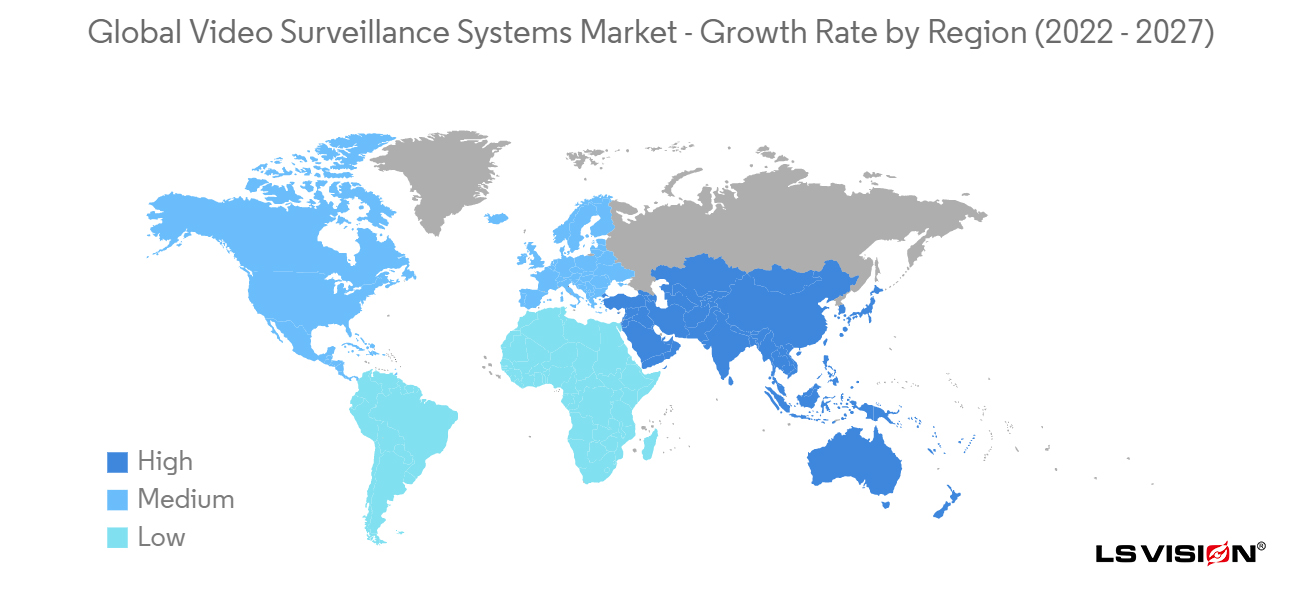
Schlussfolgerung
In addressing global environmental challenges, governments and enterprises worldwide are integrating sustainability into their core strategies by establishing carbon reduction plans and regulations. From a technological perspective, low-power components such as AOV SoCs and sensors are reducing camera energy consumption. Additionally, renewable energy products like solar-powered wireless cameras are rapidly gaining traction in remote areas, reducing installation and operational costs. Digital twin technology, with its ability to integrate sensors for enhanced environmental monitoring and management, contributes significantly to sustainable development.
FAQ
The global video surveillance system market is expected to reach USD 81.68 billion by 2024, with a compound annual growth rate (CAGR) of 12.22%, and is projected to grow to USD 145.38 billion by 2029.
Axis Communications AB, Bosch Security Systems Incorporated, Honeywell Security Group, Samsung Group, Panasonic Corporation and LS VISION
The Asia-Pacific region is expected to have the highest compound annual growth rate (CAGR) during the forecast period (2024-2029).
In 2024, North America holds the largest market share in the global video surveillance system market.

